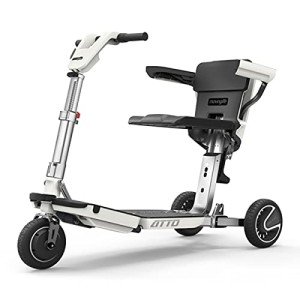Understanding Mobility Aids: Enhancing Independence and Quality of Life
As society continues to age and individuals significantly look for ways to preserve self-reliance, the need for mobility aids has actually never been more essential. Mobility aids, which incorporate a range of devices created to help people with strolling or walking around, play a vital role in promoting mobility, enhancing safety, and improving total quality of life. This post will check out the various types of mobility aids, their advantages, considerations for choice, and respond to some often asked questions.
Types of Mobility Aids
Numerous mobility aids are offered, each designed to deal with specific needs. The following table summarizes some of the most common types of mobility aids and their functions.
| Type of Mobility Aid | Description | Best Suited For | Key Features |
|---|---|---|---|
| Canes | A handheld stick offering assistance and balance. | People who need very little help. | Light-weight, portable, adjustable height. |
| Walkers | Four-legged frames providing stability. | Those requiring significant support while strolling. | Foldable, some with wheels, added security features. |
| Rollators | Wheeled walkers with a seat for resting. | People needing mobility with the choice to rest. | Brakes, baskets for individual items, adjustable height. |
| Wheelchairs | Chairs with wheels for individuals with minimal mobility. | Those unable to stroll or requiring substantial assistance. | Manual or powered options, customizable seating. |
| Scooters | Motorized devices for bigger distances. | Individuals with restricted stamina but requiring independence. | Different sizes and styles, typically portable. |
| Crutches | Support devices positioned under the arms or forearms. | Individuals recovering from lower limb injuries. | Adjustable, lightweight, needs upper body strength. |
| Stairlifts | Mechanical devices for moving in between floorings. | Users facing obstacles in multi-level homes. | Adjustable for various staircases, automated. |
Benefits of Mobility Aids
Mobility aids offer a variety of benefits that can substantially improve the lives of people facing mobility challenges. Some significant benefits include:
- Increased Independence: Mobility aids empower people to move freely without counting on others for support, thereby improving their self-confidence and self-esteem.
- Enhanced Safety: Using mobility aids can lower the risk of falls and injuries, specifically for older adults or those with balance problems.
- Improved Quality of Life: By assisting in mobility, individuals can engage in social activities, participate in events, and enjoy life more completely, adding to much better emotional and mental health.
- Rehab Support: After surgery or injury, mobility aids provide necessary assistance and stability, assisting in recovery and rehabilitation processes.
- Ease of access: Many mobility aids are developed to be used both indoors and outdoors, ensuring that individuals can navigate different environments with ease.
Factors to Consider When Choosing Mobility Aids
Selecting the appropriate mobility aid requires mindful consideration of numerous elements, consisting of:
| Factor | Considerations |
|---|---|
| User's Needs | Examine the level of mobility required; think about whether the user requires short-term or long-term assistance. |
| Physical Limitations | Examine the user's strength, balance, and coordination to identify the very best kind of help. |
| Setting | Think about the main environments where the help will be utilized, such as home, outdoors, or particular terrains. |
| Weight and Portability | Guarantee that the selected gadget is workable relating to mobility and storage, specifically for outdoor usage. |
| Budget | Mobility aids can be found in a variety of prices; think about insurance protection and readily available financing choices. |
| Adjustability | Pick aids that can be adjusted for height and comfort to accommodate growth or changing requirements. |
Often Asked Questions About Mobility Aids
1. How do I know if I need a mobility aid?
Lots of elements can signify the requirement for a mobility aid, such as difficulty walking or balancing, tiredness while standing, or a recent surgery affecting mobility. Consulting with a healthcare specialist can supply assistance customized to individual requirements.
2. What types of mobility aids are covered by insurance?
Coverage differs between insurance providers, however a lot of provide choices for durable medical devices, which normally includes wheelchairs, walkers, and some kinds of walking canes. Contact your insurance provider for particular coverage details.
3. Can mobility aids be utilized outdoors?
Yes, many modern mobility aids are created for outdoor use. Rollators, scooters, and some walkers are geared up with features for stability and ease of use on different surface.
4. How do I preserve my mobility help?
Routine maintenance involves examining for any wear and tear, making sure that parts such as wheels, brakes, and frames are functioning correctly, and cleaning the equipment as needed. Following the maker's guidelines is essential for safety.
5. Is there a threat of ending up being based on mobility aids?
While some users might end up being reliant on mobility aids, they are created to promote self-reliance and mobility. Slowly utilizing a mobility help can enhance confidence and help retain physical strength and coordination.
Mobility aids are invaluable tools that empower people to get rid of physical challenges, promoting independence and enhancing quality of life. By understanding folding mobility scooters with basket of mobility aids offered, their advantages, and crucial factors for consideration, households and caregivers can make informed decisions that best meet the requirements of their loved ones. With the ideal assistance, those with mobility difficulties can lead satisfying and active lives, free to explore the world around them.

